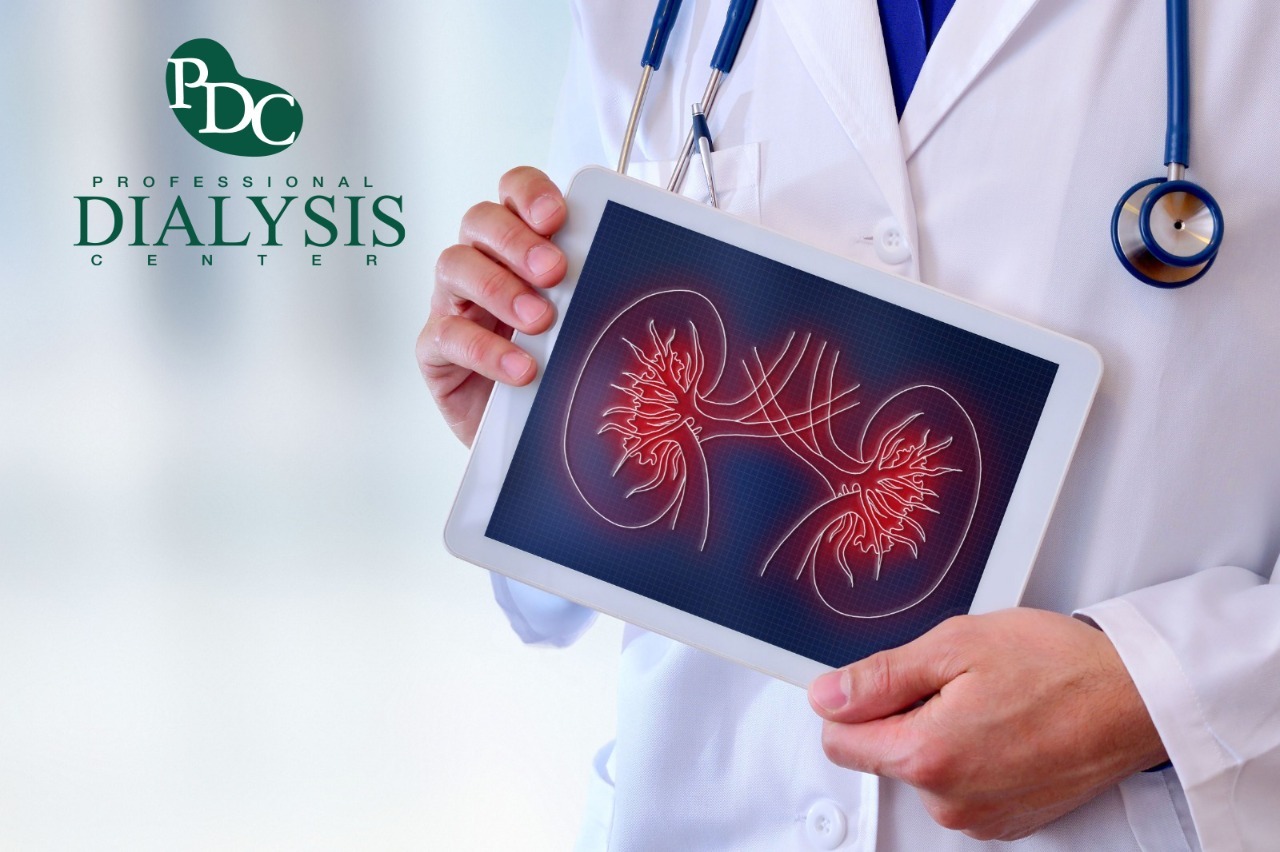info@professionaldialysiscenter.com
10021 Pines Blvd # 201, Pembroke Pines, FL 33024
Call us: +1 (954) 417-1070
🇺🇸 English
We’re here to answer any question you may have.
Would you like to join our growing team?
careers@hub.com
Would you like to join our growing team?
careers@hub.com
Error: Contact form not found.









At Professional Dialysis Center, we are dedicated to providing personalized, high-quality dialysis care to all of our patients.
Dialysis is a treatment to clean your blood when your kidneys are not able to. It helps your body remove waste and extra fluids in your blood. It does some of the work that your kidneys did when they were healthy. A healthy, working kidney can remove fluid and waste 24 hours a day. Dialysis can only do 10-15% of what a normal kidney does.
In hemodialysis, a dialyzer (filtering machine) is used to remove waste and extra fluid from your blood, and then return the filtered blood into your body. Before starting hemodialysis, a minor surgery is needed to create a vascular access site (opening into one of your blood vessels), usually in your arm. This access site is important to have an easy way to get blood from your body, through the dialyzer, and back into your body. Hemodialysis can be done at a dialysis center or at home. Treatments usually last about four hours and are done three times per week. Some people may need more time for treatments based on their specific needs.
In peritoneal dialysis, your blood is filtered inside your own body instead of using a dialyzer machine. For this type of dialysis, the lining of your abdomen or belly area (also called the peritoneum) is used as a filter. Before starting peritoneal dialysis, a minor surgery is needed to place a catheter (soft tube) in your belly.
During each treatment, your belly area is slowly filled with dialysate (a cleansing fluid made from a mixture of water, salt, and other additives) through the catheter. As your blood flows naturally through the area, extra fluid and waste products are pulled out of the blood vessels and into the belly area by the dialysate (almost like a magnet). After a few hours, the fluid mixture is drained from your belly using the same catheter and bag that was used at the beginning of the treatment. Peritoneal dialysis can be done almost anywhere if you have the supplies required to perform the treatment.
The supplies and equipment needed, duration of each treatment (also known as an exchange), and number of treatments per day will differ depending on the type of PD you are using and your medical condition. More information about these treatments can be found on the NKF Peritoneal Dialysis AtoZ page.
You have many dialysis treatment options, one of which is in-center hemodialysis. With this treatment, you schedule three four-hour treatments per week at a kidney dialysis center that’s fully staffed by a personalized care team. Some people prefer to go to a dialysis center for treatment because:
• Treatment is administered by trained kidney care professionals. • They enjoy social interactions with fellow dialysis patients and staff. • Dialysis is only three times a week, leaving four free days. After talking with your nephrologist, you may determine that in-center hemodialysis is right for your lifestyle.Once you arrive at the dialysis center, the healthcare team—from the nurse to the facility administrator—will take care of all aspects of treatment.
First, your access area will be washed by a patient care technician (PCT). Once that’s complete, you will be weighed and escorted to your dialysis chair. You’re standing and sitting blood pressure will be taken and a dialysis nurse will check your vitals before connecting you to the dialysis machine.
The typical dialysis session is four hours. During that time your care team will monitor your blood pressure and the dialysis machine’s performance. When the dialysis treatment time is up, they will disconnect you from the dialysis machine and record your vital signs again.
What can I do while I dialyze at a center?
You are free to read, watch television, work or play on your laptop, talk to other patients and care team members, sleep—whatever activity you can do from the dialysis chair. All Professional Dialysis Center (PDC) locations offer free Wi-Fi for people who want to be online during in-center treatments.
Who is taking care of me at the dialysis center?
You spend a lot of time—and place a lot of trust—with the people who care for you. A supportive kidney health care team can help make your experience more pleasant. At Professional Dialysis Center (PDC), you’ll receive personal care and attention from a highly trained team of professionals that is committed to helping you maximize your quality of life.
Enhance your quality of life by dialyzing at home. Learn about home dialysis by speaking with a Professional Dialysis Center representative.
HHD works much like in-center hemodialysis but is done at home with a smaller, more user-friendly machine that cleans toxins from your blood. With the help of a care partner to perform the treatments, there are many potential benefits HHD patients can experience, such as:
• The ability to dialyze in the comfort of home
• Greater ability to travel
• Better transplant success rate
• Shorter recovery time after treatments
• Fewer medications required
• Better blood pressure control
• Improved sleep reported
Contact Us
Adding {{itemName}} to cart
Added {{itemName}} to cart